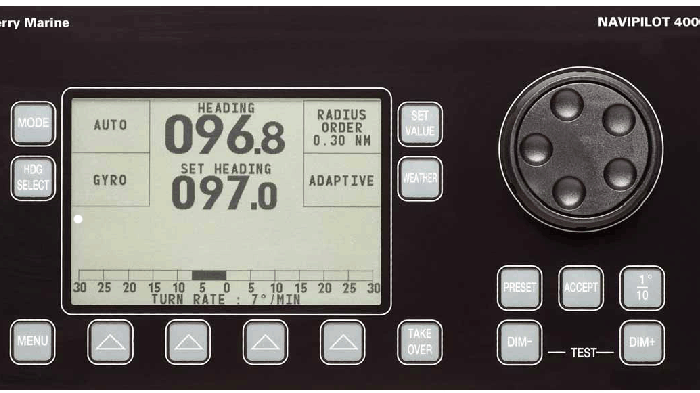สินค้า
NAVIKNOT
NAVIKNOT
Multisensor Speed Log Series
The NAVIKNOT Multisensor Speed Log Series offers unlimited flexibility and has been designed with the most modern computer tools for application on all types of vessels. The Speed Logs of Northrop Grumman Sperry Marine measures Speed Over Ground (SOG) and Speed Through Water (STW) with a speed accuracy of +/-1% or 0.1kn whichever is greater.
The NAVIKNOT’s display provides ships water and ground speed information in an accessible way, for ease of use, quick interpretation and berthing and docking operations.
Benefits of the NAVIKNOT series:
- Varied selection of speed and distance interfaces
- Suitable for all types of vessels ranging from small pleasure craft to the largest crude carriers
- Simple and low-cost installation
- Type approved by Germanischer Lloyd to Marine Equipment Directive (MED) 96/98/EC
- Support of docking manoeuvres by displaying the necessary information
Single and dual axis speed logs, 600 series with docking function, are available. The speed logs provide information about transversal and longitudinal ship’s speed. The systems can be interfaced with most modern peripheral equipment and speed output can be transmitted to ARPA radar, ECDIS, AIS, VDR, etc.
Northrop Grumman Sperry Marine provides electromagnetic sensors, doppler transducers and satellite sensors as follows:
Electromagnetic Sensor (Single-Axis Water Speed)
The electromagnetic sensor houses a coil which, when energised with an AC current, produces a magnetic field around the sensor in the surrounding water. The ship’s motion through the water produces an electrical field perpendicular to the magnetic field and the ship’s motion. The resulting signal is picked up by the sensor electrodes and fed to the preamplifier, where it is converted into a digital format and transmitted to the NAVIKNOT electronics unit.
Doppler Transducer (Single-Axis Water Speed)
The Doppler transducer utilizes the Doppler frequency shift effect to determine the speed of a vessel through water. The transducer emits high-frequency sound pulses in the fore and aft directions through two transmitter windows. Two receiver windows in the transducer detect the return echo of the sound pulses. A time delay between pulse transmissions ensures that echoes are received from the undisturbed water outside the vessel’s boundary layer. The signals are processed to determine the ship’s fore/aft speed vector. The preamplifier transmits the speed information in a digital format to the NAVIKNOT electronics unit.
Satellite Sensor (Dual-Axis Ground Speed)
The satellite sensor makes use of GPS satellite signals to determine a ship’s longitudinal and transverse ground speeds. Two GPS receivers and three rate gyros integrated in an electronics unit, and a dual antenna unit, determine a vessel’s heading velocity, course and attitude. While the heading is referenced to the ship’s fore-and-aft line, the velocity and course represent the motion vector, i.e. the magnitude and direction of its motion over ground.
The information received from the satellites is processed in the electronics unit, which resolves the velocity data into the ship’s longitudinal and transverse ground speeds. The speed vectors combined with the rate-of-turn data are used to discern between translational and rotational movement of the vessel. These are used to determine the bow and stern transverse speeds shown in the docking display.
For more information about Northrop Grumman Sperry Marine’s NAVIKNOT Multisensor Speed Log, please contact us.

